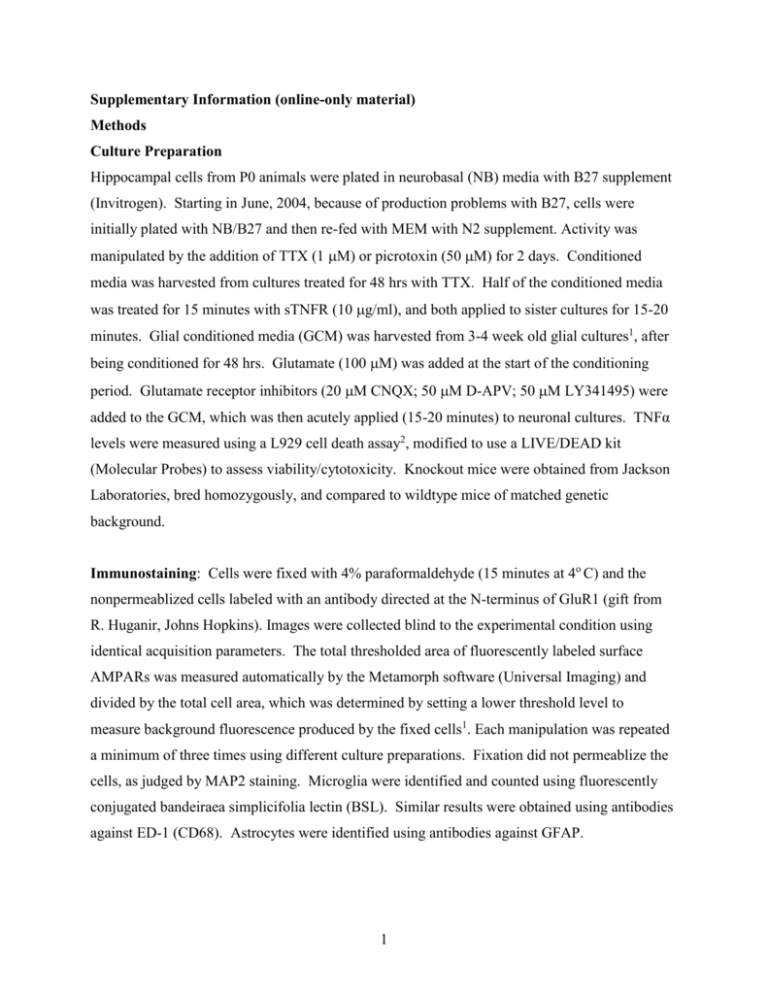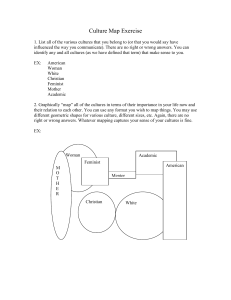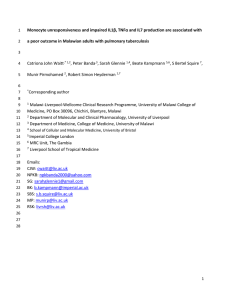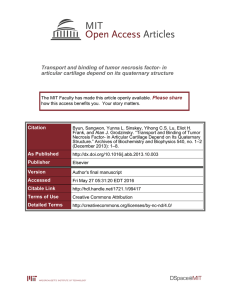Supplementary Notes - Word file
advertisement

Supplementary Information (online-only material) Methods Culture Preparation Hippocampal cells from P0 animals were plated in neurobasal (NB) media with B27 supplement (Invitrogen). Starting in June, 2004, because of production problems with B27, cells were initially plated with NB/B27 and then re-fed with MEM with N2 supplement. Activity was manipulated by the addition of TTX (1 M) or picrotoxin (50 M) for 2 days. Conditioned media was harvested from cultures treated for 48 hrs with TTX. Half of the conditioned media was treated for 15 minutes with sTNFR (10 g/ml), and both applied to sister cultures for 15-20 minutes. Glial conditioned media (GCM) was harvested from 3-4 week old glial cultures1, after being conditioned for 48 hrs. Glutamate (100 M) was added at the start of the conditioning period. Glutamate receptor inhibitors (20 M CNQX; 50 M D-APV; 50 M LY341495) were added to the GCM, which was then acutely applied (15-20 minutes) to neuronal cultures. TNFα levels were measured using a L929 cell death assay2, modified to use a LIVE/DEAD kit (Molecular Probes) to assess viability/cytotoxicity. Knockout mice were obtained from Jackson Laboratories, bred homozygously, and compared to wildtype mice of matched genetic background. Immunostaining: Cells were fixed with 4% paraformaldehyde (15 minutes at 4o C) and the nonpermeablized cells labeled with an antibody directed at the N-terminus of GluR1 (gift from R. Huganir, Johns Hopkins). Images were collected blind to the experimental condition using identical acquisition parameters. The total thresholded area of fluorescently labeled surface AMPARs was measured automatically by the Metamorph software (Universal Imaging) and divided by the total cell area, which was determined by setting a lower threshold level to measure background fluorescence produced by the fixed cells1. Each manipulation was repeated a minimum of three times using different culture preparations. Fixation did not permeablize the cells, as judged by MAP2 staining. Microglia were identified and counted using fluorescently conjugated bandeiraea simplicifolia lectin (BSL). Similar results were obtained using antibodies against ED-1 (CD68). Astrocytes were identified using antibodies against GFAP. 1 Culture Electrophysiology: Pipette solutions contained (in mM): 122 Cs-gluconate, 8 NaCl, 10 Glucose, 1 CaCl2, 10 HEPES, 10 EGTA, 0.3 Na3-GTP, 2 Mg-ATP; pH 7.2. For recording mIPSCs, Cs-gluconate was replaced with CsCl. Cultures were superfused with normal Ringer’s solution (in mM: 115 NaCl, 5 KCl, 23 Glucose, 26 Sucrose, 4.2 HEPES, 2.5 CaCl2, 1.3 MgCl2; pH 7.2) containing TTX (200 nM), picrotoxin (50 μM), and D-APV (10 μM). For mIPSCs, the picrotoxin was replaced with 5 μM NBQX. Pyramidal cells were identified by their morphology, input resistance, and presence of non-rectifying mEPSCs. Data were acquired at 2 KHz with Igor Pro software (Wavemetrics), and analyzed with Mini Analysis software (Synaptosoft). All mEPSCs/mIPSCs above a threshold value (6 pA / 7 pA) were included in the data analysis and each mEPSC/mIPSC was verified visually. Acute Slice Electrophysiology: Slices were incubated in the external perfusing medium containing (in mM): 119 NaCl, 2.5 KCl, 2.5 CaCl2, 1.3 MgSO4, 1 NaH2PO4, 26.2 NaHCO3, 11 glucose and 0.05 picrotoxin and which was saturated with 95% O2 / 5% CO2. To examine the effects of TNFα, slices were incubated in external solution containing 1 g/ml TNFα for a minimum of 2-3 hrs before experiments commenced. Throughout each experimental day, recordings from control and TNF-treated slices prepared from the same animal were interleaved. For LTP experiments, the calcium and magnesium concentrations were increased to 4 mM. Whole-cell voltage-clamp recordings were made from CA1 pyramidal cells using the same internal solution as for the cultures. The AMPAR component of EPSCs at +40 mV was isolated using 50 M D-APV, and subtracted from the total current to yield the NMDAR component. References 1. Stellwagen, D., Beattie, E. C., Seo, J. Y. & Malenka, R. C. Differential regulation of AMPA receptor and GABA receptor trafficking by tumor necrosis factor-alpha. J. Neurosci. 25, 3219-28 (2005). 2. Trost, L. C. & Lemasters, J. J. A cytotoxicity assay for tumor necrosis factor employing a multiwell fluorescence scanner. Anal. Biochem. 220, 149-53 (1994). 2









